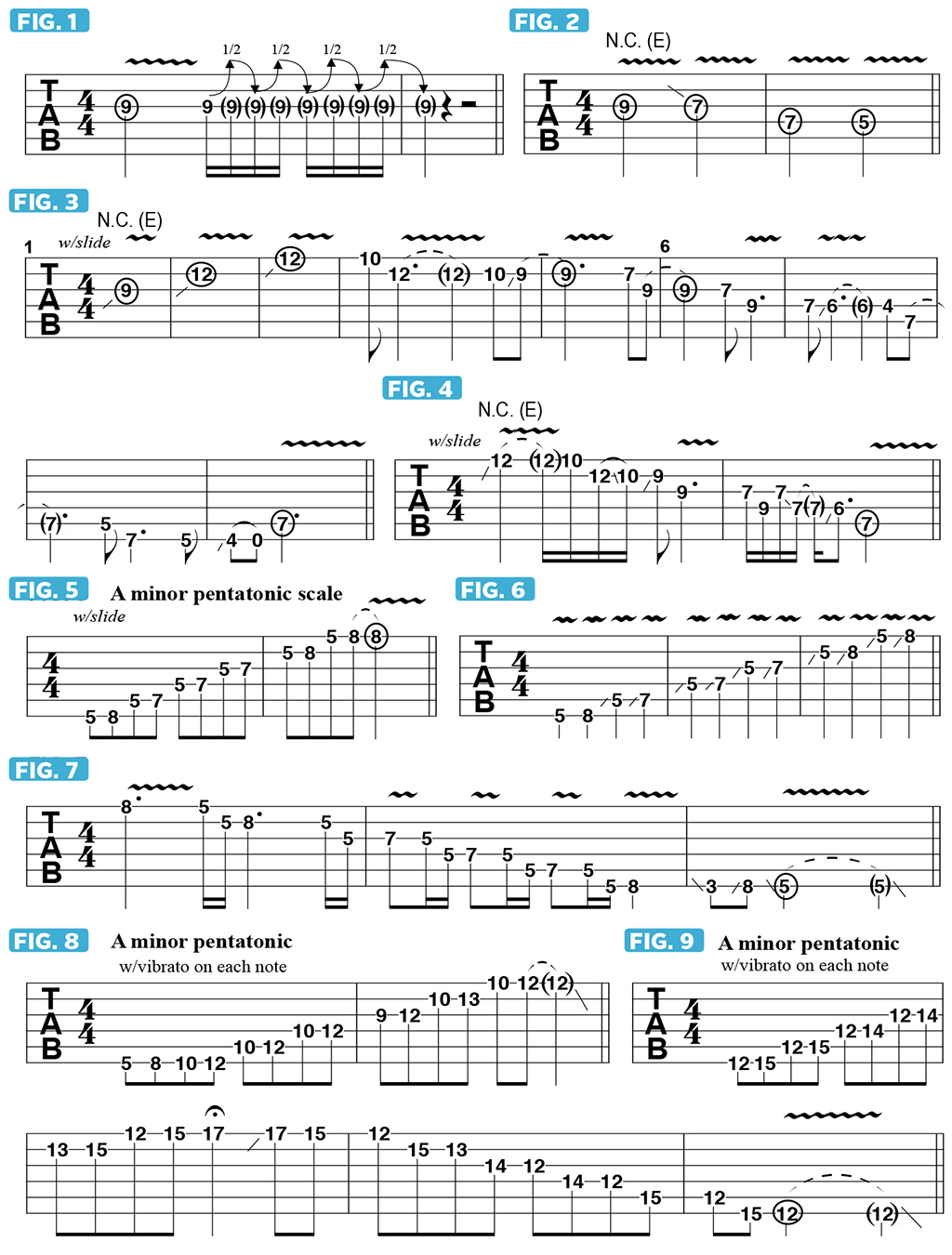How to Develop a Great Slide Vibrato
One of the most challenging aspects of learning slide guitar is developing a consistently pleasing vibrato.
One of the most challenging aspects of learning slide guitar is developing a consistently pleasing vibrato. One reason for this is that slide vibrato technique is completely different from that used to perform a standard blues/rock-style finger vibrato. To create a slide vibrato, you wiggle the slide back and forth laterally, side to side, using a movement similar to that employed by a classical violinist to produce a vibrato, except when playing slide, the string does not touch the fingerboard.
A good vibrato sounds even, meaning that its speed — the rate of pitch modulation — and depth, or width, are consistent, as illustrated with a standard finger vibrato in FIGURE 1. Play all the notes in FIGURE 2 and strive to make each finger vibrato sound consistently smooth and even.

The first decisions to make in regard to performing any vibrato are how fast and wide you want it to sound. Whether I’m playing with a slide or conventionally, I generally prefer my vibratos to be fairly wide and relatively slow; to my ears, this sounds the most vocal-like and “singing.” A really good vibrato will almost sound like a tremolo effect. In FIGURE 3, using the slide, I apply a vibrato to each note as I play a melody based on E Mixolydian (E F# G# A B C# D), the mode most closely associated with an E dominant seven chord (E7: E G# B D). Remember to apply some string damping (muting) with either or both hands, so that only the notes you’re playing sound.
To create this even vibrato motion with the slide, place your fret-hand thumb squarely against the middle of the back of the neck, ensuring that nothing else is touching the neck except the slide itself. Now, with a stiff wrist, rock your entire arm back and forth, letting it swing out about the distance of one fret both below and above the starting note, so that its pitch alternately falls and rises about a half step. You can practice this motion in “mid-air,” without sounding a note on the strings, then apply the vibratos as shown in FIGURE 4. When sitting, I’ll rest my elbow on my leg, and when standing, I’ll hold my arm against my side for added stability.
FIGURE 5 illustrates the A minor pentatonic scale (A C D E G), fretted conventionally. In FIGURE 6, the same notes are played with the slide, with a vibrato applied to every note. In FIGURE 7, the technique is applied to a melody based on this same scale pattern.
A great way to master slide vibrato technique is to move through a series of positions and patterns for a minor pentatonic scale and apply vibrato to every note. FIGURES 8 and 9 illustrate this approach, as performed in ninth/10th position and 12th position, respectively. Strive for accurate pitch centering on each note, before starting the vibrato, and listen closely to the width and speed of the vibrato, with the goal of achieving a singing quality.
Guitar World Associate Editor Andy Aledort is recognized worldwide for his vast contributions to guitar instruction, via his many best-selling instructional DVDs, transcription books and online lessons. Contact Andy at andyaledort.com.
All the latest guitar news, interviews, lessons, reviews, deals and more, direct to your inbox!
Guitar World Associate Editor Andy Aledort is recognized worldwide for his vast contributions to guitar instruction, via his many best-selling instructional DVDs, transcription books and online lessons. Andy is a regular contributor to Guitar World and Truefire, and has toured with Dickey Betts of the Allman Brothers, as well as participating in several Jimi Hendrix Tribute Tours.

